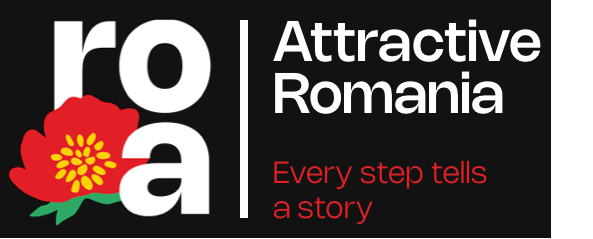History on a plate - traditional Vlascan recipes
The dough is kneaded very carefully. As if those hands would turn him into a story. A real one. It is the story of some people who brought a twisted pie with them to the Vlascan lands. The joy of the housewives near the Danube is to prepare the dolongaci, a labyrinth of aromas and tastes in which you will lose yourself and find yourself when you visit the route of traditional Giurgiu gastronomy.
Just as the dolangaci inherited from the Bulgarians is full of layers, the route between the waters in Giurgiu County is a surprising one. There are 100 kilometers to go, starting near the Danube, in Slobozia, and ending in Comana, near the Neajlov Delta. You travel along watercourses, places where once there were centuries-old forests and you find traces of a history that marked the old territory of Vlasca.
Whether you discover the medieval era and understand the Ottoman heritage, that you learn about the Bulgarians who took shelter here or that you understand the connection with Vlad the Impaler, the travel is an opportunity to taste the traditional products of the area. Diversity, inspiration, cultural and ethnic influences - all are part of the ingredients of this picturesque place - Giurgiu County.
If you start your journey along the Danube, at the gateway to the Balkans, you will discover the Dolangac. The name of the pie comes from the Turkish language and means tangled, labyrinth, but it was brought across the water by the Bulgarians who settled here. The housewives of Slobozia know how to prepare dolangac, be it sweet or salty. And the locality has a few more places to stop. One is the largest aronia plantation in the country. At Bionatec you can find the miracle fruit for health, where you can drink delicious and natural juices made from it. And for peace of mind, stop at the "Saint John the Russian" Monastery, the first place in Romania dedicated to a military saint.
From here you quickly reach Giurgiu, the heart of the area where all the flavors, stories, innovation and tradition are concentrated. On the waterfront there are restaurants with local specialties, and from here you can go on excursions on the Danube. In the central area, you must climb the Clock Tower, the emblem of Giurgiu, and then visit the ruins of the Fortress of Mircea the Elder.
Further on, you can follow the Danube Danube eco-route by bike to reach Oinacu through places abounding in vegetation, then stop at Prundu and dedicate more time to a stop at Herăști. There the housewives make another delicious pie. It is the specialty of the place – goosefoot pie. Goosefoot is a plant, a kind of wild spinach that is found in abundance in the area, part of the spontaneous flora that the locals appreciate.
The story of the Casa de piatră din Herăști is related to this pie. It is worth visiting the Manor of the Udriște Năsturel boyar, the oldest Romanian monument of civil architecture, made entirely of polished stone. It seems that the workers who came to restore it in the 19th century for Prince Miloš Obrenovic brought the recipe for this pie. They were of Serbian origin, some say, or even Bulgarian, and next to an impressive estate, they left the secret of the goosefoot pie, which the inhabitants of Herăști still prepare today. And if you visit the mansion, you will learn the stories here, about the Năsturel family, Obrenovic's move, about his beautiful wife Maria, the daughter of a Moldavian nobleman who became Cuza's mistress, and many other stories preserved in the stone walls. If you arrive in Herăști in the spring, on Lazarus Saturday, i.e. the day before Palm Sunday, you will also catch the County festival of spring customs, "Willow bud" in the churchyard, a cheerful and colorful event where you will get to know the whole community and share the joy with those here.
Last stop, Comana. A rich and surprising place that deserves a longer stop on the journey to Giurgiu land. If a walk through the Parcul Natural Comana will impress you with the unique space, the wealth of nature and its special beauty, you will have something to tell your loved ones about the second area in Romania in terms of biodiversity after the Danube Delta. There are 250 square kilometers, home to 141 species of birds and 13 species of fish, some unique. Whether you decide to go on a hike, you are passionate about photography, you go to discover the centuries-old trees that grow here, or you go for a boat ride, the place will stay in your soul, and you will come back. Especially since during your walk you will also learn the legend that says that here is the tomb of Vlad Țepeș.
From the park, the signs direct you to the Paper Mill in the Village of Craftsmen. It is a complex where you can visit a small and special workshop-museum dedicated to the old trades related to books and printing. Moreover, you can make paper, book binding or hand printing yourself. This place is a delight for groups of children or adults who plan to come here. And it's not just about paper. In the small village of craftsmen there are many workshops that you can participate in and that will lead you to the soul of traditions and stimulate your creativity - in the clay bricks and timber frame houses you can explore rush weaving, pottery, weaving loom weaving, blacksmithing, milling and much more.
After you've learned what life was like in the countryside, taste something made there, at Bucatăria Dealul Morii. The ladies in charge of the food are talented and prepare goodies that complete the experience. You will surely not forget this place and its warm-hearted people who welcome you with smiles and warmth.
Last but not least, it is worth lingering at the Comana Monastery. Once, here was an island in the middle of the marshes where Vlad the Impaler founded a monastery more than five centuries ago. Legend has it that his body was buried here, and his head was sent to the Ottomans. Today you can no longer find the old wooden monastery that has disappeared, but you can visit the Brancoveanu style monastery that went through many moments of balance and was saved each time. The monks will show you the impressive Mausoleum of the Heroes who fell in the First World War in the battles on Neajlov, built on the initiative of Queen Maria. There are the remains of over 800 soldiers of various ethnicities, many unknown. Then you can see the museum collection of the monastery made up of old icons, wax statues of the rulers of Wallachia, maps, objects from the households in the area, ecclesiastical or military and much more.
Pilgrims are always welcomed at the monastery with special dishes. They use only natural products and combine old culinary habits with modern ones. At the Comana Monastery, you will surely delight your taste buds with their fish dishes, or pumpkin cabbage rolls, monk's pot, fish borscht and many other unforgettable dishes.
The recipes from Vlasa have a special flavor that goes well with the places between the flowing waters. The route of traditional Giurgiu gastronomy is waiting for you to discover it without haste, because here the plate is full of goodies, but also of history.
Recommended festivals and events
● County festival of spring customs, "Willow bud" (on Lazarus Saturday) - Herăști
● "Danube at Giurgiu" Festival
● "Toamna Giurgiuveană" fair, organized annually in Giurgiu municipality on the occasion of the "National Day of Romanian agri-food products", domestic producers from Giurgiu County, but also from other regions of the country exhibit their products for sale
● The goodies fair from Herăști, organized by the children from the Elina Basarab School
● The Comana autumn fair, an event in which merchants, students at the secondary school, of the Technological High School, as well as local residents, housewives and craftsmen offer the participants seasonal vegetables and fruits, jams, pickles, bakery products, cheese and cakes.
Useful links on the route
● Giurgiu National Tourist Information and Promotion Center, Bucharest boulevard no. 59A (Mihai Viteazu Park)
https://www.facebook.com/cniptgiurgiu
telephone: 0346566955
● Sofia cake shop- where you can order the dulangaci pie at least 24 hours in advance, by phone: 0722 629569
● Comana Monastery, Comana commune, abbot Dr. Mihail Muscariu, tel./fax 0246283075 www.manastireacomana.ro
● Conacul Udriște Năsturel, Miloș Obrenovici str. no. 32, Herasti
Visiting schedule: Saturday-Sunday between 10:00 and 16:00; Phone: 0749 953990; contact@conaculudristenasturel.ro / https://conaculudristenasturel.ro
● Paper mill, str. Funieru, no. 278-280, Comana
Workshop appointments: Monday-Friday, between 9.00-17.00), Telephone: 0723 266262) / www.moaradehartie.ro
● Comana Natural Park, open non-stop
The price for visiting the protected area on land, on foot or by bicycle/person/day: 5 lei (for other prices, see the website www.comanaparc.ro)
Address DJ 411 - DJ 412A, Comana commune, Giurgiu county, Phone: 0372 998863, E-mail: comanaparc@gmail.com / comanaparc@comanaparc.ro / https://www.facebook.com/ParculNaturalComana
Reviews












.jpg?locale=en)
 Continue with Google
Continue with Google
